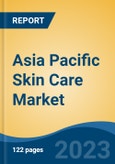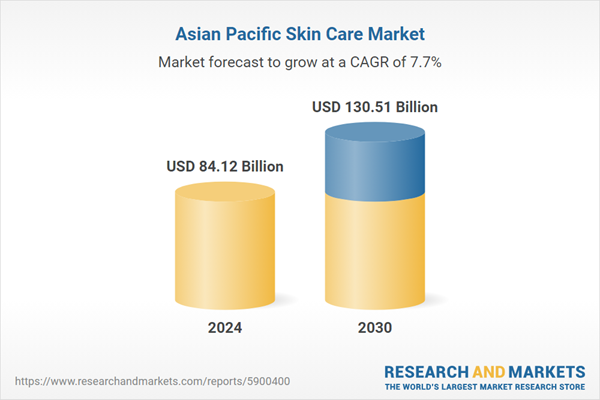Speak directly to the analyst to clarify any post sales queries you may have.
10% Free customizationThis report comes with 10% free customization, enabling you to add data that meets your specific business needs.
Several countries in the APAC region, including China, Japan, South Korea, and Singapore, have experienced substantial economic growth. This has led to an increase in disposable income, enabling consumers to invest more in skincare products. Additionally, different countries in APAC have unique beauty and skincare traditions. For example, South Korea is renowned for its 10-step skincare routine, while Japan is known for its focus on natural ingredients. These cultural influences shape consumer preferences and drive demand for specific product categories.
In 2022, South Korea's cosmetics market was valued at USD3.9 billion, ranking among the top 10 global beauty markets. Despite a decline in local production and exports by 18.4% and 2.2%, respectively, the country remained the fourth largest cosmetics exporter globally, behind France, the U.S., and Germany. Total cosmetic imports slightly increased to USD1.3 billion, with France (USD462 million), the U.S. (USD274 million), and Japan (USD126 million) being the largest exporters to South Korea. K-beauty continues to gain popularity, particularly across Asia.
Key Market Drivers
Increasing Consumer Awareness and Health Consciousness
One of the primary drivers of the skincare market in the APAC region is the rising consumer awareness and health consciousness. With changing lifestyles, urbanization, and increased exposure to global beauty and wellness trends, consumers in APAC countries are becoming more conscious of their skincare routines and overall well-being.This heightened awareness has led to a shift in consumer behavior, where skincare is no longer considered a luxury but an essential part of daily life. Consumers are actively seeking products that not only address their specific skincare concerns but also contribute to maintaining healthy and youthful-looking skin.This shift in mindset has paved the way for an extensive range of skincare products that cater to various skin types, concerns, and age groups. Moreover, the influence of social media, beauty influencers, and celebrity endorsements has played a significant role in educating and motivating consumers to invest in skincare. In March 2023, the Korean government unveiled plans to advance technologies focused on bespoke cosmetics and personalized skin diagnosis programs, utilizing IoT and big data to support the growth of the Korean bio-health industry. The 2023 Glowpick 1st Half Awards revealed that Korean consumers are increasingly prioritizing health, safety, and authenticity, seeking deeper emotional connections and meaningful experiences with products, moving away from the mass consumption trends that dominated previous decades.
Key Market Challenges
Cultural Diversity and Market Fragmentation
One of the most significant challenges in the Asia Pacific Skin Care Market stems from the vast cultural diversity across the region. APAC encompasses countries with diverse cultural backgrounds, historical beauty ideals, and skincare traditions. This diversity results in fragmented consumer preferences and demands, making it challenging for skincare brands to create products that resonate with every market within the region. For instance, in countries like South Korea and Japan, there is a strong emphasis on skincare routines involving multiple steps and the use of specific products like essences and sheet masks.In contrast, consumers in Southeast Asia may prioritize sun protection due to the region's tropical climate. India, with its unique herbal and Ayurvedic skincare traditions, presents another set of preferences. This cultural fragmentation necessitates a tailored approach for skincare brands, which must invest in extensive market research, product localization, and marketing strategies to address the specific needs and expectations of each market. It also requires a deep understanding of cultural nuances and a willingness to adapt product formulations and branding accordingly.
Key Market Trends
Natural and Sustainable Ingredients Revolutionizing the Asia Pacific Skin Care Market
One of the most significant trends shaping the Asia Pacific Skin Care Market is the increasing consumer preference for natural and sustainable ingredients. As consumers become more conscious of the environmental impact of their choices and seek healthier, eco-friendly alternatives, the beauty and skin care industry is responding with innovative products. In recent years, there has been a surge in demand for skin care products formulated with natural ingredients sourced from the region itself. Ingredients such as green tea, ginseng, rice bran, and various botanical extracts have gained popularity for their perceived skin benefits and eco-friendly nature.For example, Korean beauty brands have capitalized on the global fascination with K-beauty products, which often feature natural ingredients like snail mucin and rice water. These ingredients not only cater to consumers' desire for effective skincare but also align with their growing interest in sustainable and cruelty-free options. Furthermore, sustainable packaging practices have become a focal point in the Asia Pacific Skin Care Market. Brands are increasingly using recyclable and biodegradable materials, reducing plastic waste, and adopting eco-conscious packaging designs. This approach resonates with environmentally conscious consumers and sets brands apart in a competitive market.
Key Market Players
- Unilever PLC
- L'Oreal S.A.
- Shiseido Company, Limited
- The Estée Lauder Companies
- Procter & Gamble Co.
- Kao Corporation
- Colgate-Palmolive Company
- Oriflame Cosmetics Global SA
- Beiersdorf AG
- Johnson & Johnson Services, Inc.
Report Scope:
In this report, the Asia Pacific skin care market has been segmented into the following categories, in addition to the industry trends which have also been detailed below:Asia Pacific Skin Care Market, By Product Type:
- Face Care
- Body Care
- Lip Care
- Eye Care
- Others
Asia Pacific Skin Care Market, By Gender:
- Male
- Female
Asia Pacific Skin Care Market, By Sales Channel:
- Supermarkets/Hypermarkets
- Specialty Stores
- Online
- Others
Asia Pacific Skin Care Market, By Country:
- China
- Japan
- India
- South Korea
- Australia
- Rest of Asia Pacific
Competitive Landscape
Company Profiles: Detailed analysis of the major companies present in the Asia Pacific skin care market.Available Customizations:
With the given market data, the publisher offers customizations according to a company's specific needs. The following customization options are available for the report.Company Information
- Detailed analysis and profiling of additional market players (up to five).
This product will be delivered within 1-3 business days.
Table of Contents
Companies Mentioned
- Unilever PLC
- L'Oreal S.A.
- Shiseido Company, Limited
- The Estée Lauder Companies
- Procter & Gamble Co.
- Kao Corporation
- Colgate-Palmolive Company
- Oriflame Cosmetics Global SA
- Beiersdorf AG
- Johnson & Johnson Services, Inc.
Table Information
| Report Attribute | Details |
|---|---|
| No. of Pages | 120 |
| Published | July 2025 |
| Forecast Period | 2024 - 2030 |
| Estimated Market Value ( USD | $ 84.12 Billion |
| Forecasted Market Value ( USD | $ 130.51 Billion |
| Compound Annual Growth Rate | 7.6% |
| Regions Covered | Asia Pacific |
| No. of Companies Mentioned | 10 |









